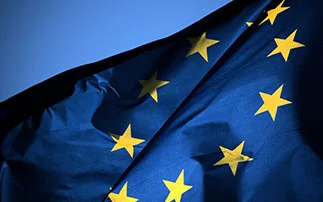Understanding the ERDF to benefit from it
The European Regional Development Fund (ERDF) is a financial instrument set up by the European Union to support regional economic and social development. It is the largest European Structural Investment Fund (ESIF), with a budget of around 200 billion euros for the period 2021-2027. In this article, we’ll look at the various eligibility criteria and conditions for benefiting from this fund.
Objectives and operation of the ERDF
The 27 member states of the European Union have uneven levels of development and particular issues. As a result, the ERDF supports projects that help to reduce the differences in development between the different regions of the European Union. It thus contributes to the implementation of European territorial cohesion policy.
These objectives are reflected into three main areas:
- Innovation and research: The projects financed must strengthen the capacities of companies and public or private organizations in the field of innovation and research.
- Development of information and communication technologies (ICT): The European Commission is pursuing the objective of a “smarter Europe”: support is therefore given to ICT-related initiatives, notably to improve access to very high-speed broadband or develop innovative digital services.
- Transition to a greener, low-carbon economy: the ERDF also supports the implementation of projects contributing to energy savings, the production of renewable energies or adaptation to climate change, projects set up to meet European commitments to climate neutrality.
To receive ERDF funding, project managers must comply with a number of criteria and conditions, which vary from region to region and from project to project. Let’s take a look at what these conditions are, and how they influence the selection process.
General criteria for benefiting from ERDF funding
ERDF co-financed programs are drawn up by member states and their regional authorities, in collaboration with the European Union. Projects proposed by project managers (companies, associations, local authorities, etc.) must meet a number of criteria:
- Be “innovative”, i.e. bring a new or improved solution to meet an identified need or solve a problem.
- Be part of a sustainable development process and promote the “ecological and energy transition”.
- Contribute to “improving the competitiveness” of the companies and regions concerned.
- Provide a “return on investment” in the medium to long term, in economic, social and environmental terms.
- Be supported by one or more partners with the “capacity” to bring the project to fruition (e.g. technical skills, cost control, team cohesion, etc.).
- Present a realistic and “acceptable” projected budget, with expenses eligible for ERDF funding.
It is important to note that these criteria are general and may vary according to the specific priorities of each region or member state.
Local, regional or territorial priorities: the relevance of geographical scope
The importance of geographical scope in ERDF grant applications cannot be underestimated, as each region has its own specific needs and challenges. Several geographical levels need to be taken into account:
- Local scale: Projects must meet the employment needs of specific communities, communes or conurbations.
- Regional scale : Generally speaking, the projects selected must contribute to the economic, social and environmental revitalization of a region or department.
- National scale: Finally, projects financed by the ERDF must be in line with national or European policies on development, innovation, energy and ecological transition, etc.
Project evaluation and selection
Once the eligibility criteria have been met and the geographical scope complied with, the project selection process can begin. This stage is carried out by the competent authorities in charge of the ERDF program concerned. Projects are assessed in several phases:
- Technical analysis: verification of compliance with eligibility criteria, consistency with program objectives, feasibility (financial, technical, partnership, etc.), etc.
- Financial analysis: Study of the estimated budget, justification of eligible expenses, calculation of the possible co-financing rate, etc;
- Final selection: Following this evaluation stage, the relevant authorities select the projects to receive ERDF funding. Applicants are then informed of the decision and funding terms and conditions.
In short, the criteria for benefiting from the ERDF are varied, taking into account the technical, financial and territorial aspects of projects. It is therefore essential to be familiar with these criteria and conditions before submitting an application, in order to maximize your chances of obtaining funding for your project.




